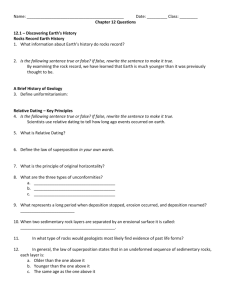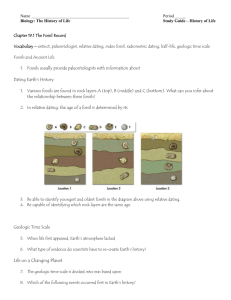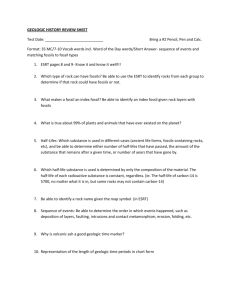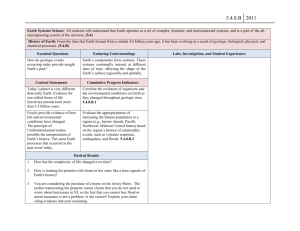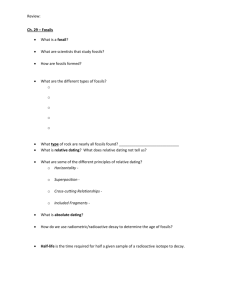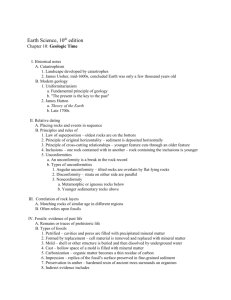Fossils - Lindbergh School District
advertisement
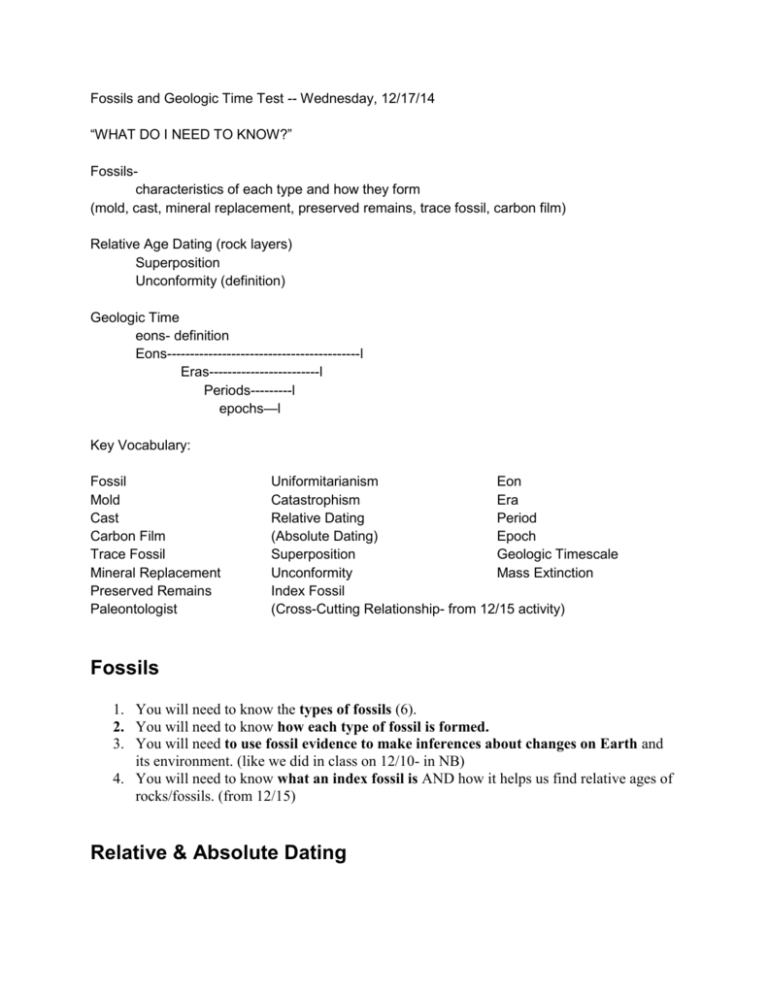
Fossils and Geologic Time Test -- Wednesday, 12/17/14 “WHAT DO I NEED TO KNOW?” Fossilscharacteristics of each type and how they form (mold, cast, mineral replacement, preserved remains, trace fossil, carbon film) Relative Age Dating (rock layers) Superposition Unconformity (definition) Geologic Time eons- definition Eons------------------------------------------l Eras------------------------l Periods---------l epochs—l Key Vocabulary: Fossil Mold Cast Carbon Film Trace Fossil Mineral Replacement Preserved Remains Paleontologist Uniformitarianism Eon Catastrophism Era Relative Dating Period (Absolute Dating) Epoch Superposition Geologic Timescale Unconformity Mass Extinction Index Fossil (Cross-Cutting Relationship- from 12/15 activity) Fossils 1. You will need to know the types of fossils (6). 2. You will need to know how each type of fossil is formed. 3. You will need to use fossil evidence to make inferences about changes on Earth and its environment. (like we did in class on 12/10- in NB) 4. You will need to know what an index fossil is AND how it helps us find relative ages of rocks/fossils. (from 12/15) Relative & Absolute Dating 5. You will need to know the law of superposition AND how this helps us find relative ages of rocks/fossils. 6. You will need to know how cross-cutting relationships (intrusions/faults in rocks) help us tell relative ages of rocks. [What we did/showed on 12/15 in class] 7. You will need to know the difference between relative dating and absolute dating. (mostly detailed on 12/15) Geologic Time 8. You will need to know the divisions of the geologic timescale and their relative ages (e.g., eon is bigger than an era). 9. You will need to know why/how scientists break up the geologic timescale (e.g., mass extinctions, change in environment, change in species type, outbreak of organisms, change in rock record). 10. You will need to recognize the comparable ages of organisms that have been on the earth (Geologic timeline in the hallway on 12/12). Bonus? Scientific Notation

